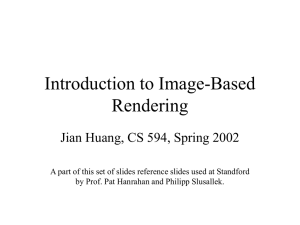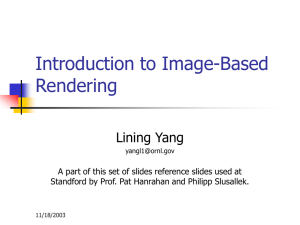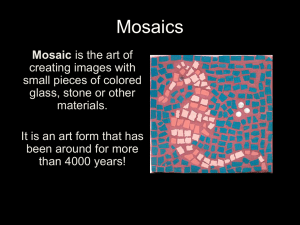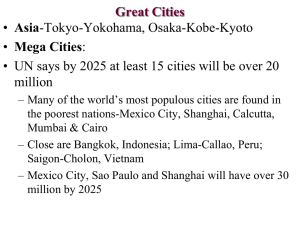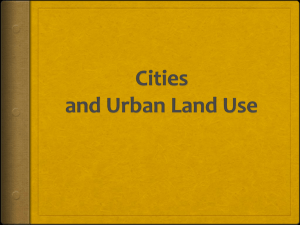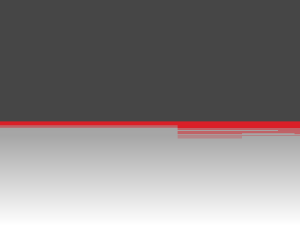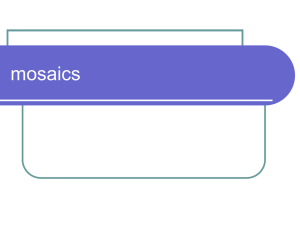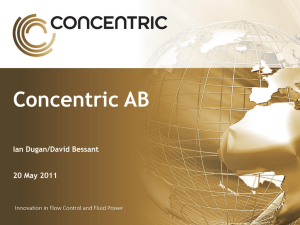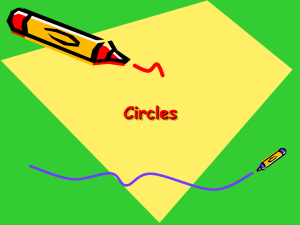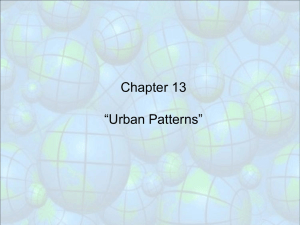Rendering with Concentric Mosaics
advertisement
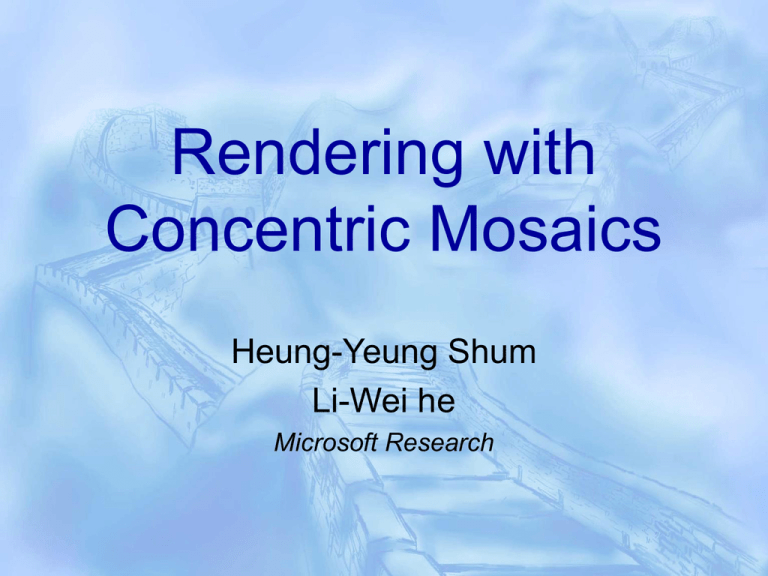
Rendering with Concentric Mosaics Heung-Yeung Shum Li-Wei he Microsoft Research Previous Work IBR recover geometric and photometric models from photographs, bypass the modeling process. Plenoptic function: 7D 5D 4D 2D 7D: (cx , cy , cz , , , , t ) 5D: (cx , cy , cz , , ) 4D: ( x1 , y1 , x2 , y2 ) 2D: ( , ) Figure 1: A taxonomy of plenoptic functions: Main Point Constrain camera motion to planar concentric circles, and create concentric mosaics by composing slit images taken at different locations along each circle. 3D plenoptic function Small file size Intro Constrain cam motion to planar concentric circle, create concentric mosaics by composing slit images taken at different locations along each circle. 3D Ray index: radius, rotation angle, vertical elevation Depth correction alleviate vertical distortion Figure 2: An experimental setup for constructing concentric mosaics Figure 3: Construction of a concentric mosaic Figure 4: A collection of concentric mosaics. Figure 9: Concentric mosaics represent a 3D plenoptic function. Figure 6: Three examples of concentric mosaics Figure 7: Rendering with concentric mosaics: (a) parallax change; (b) specular highlight and parallax change. Figure 5: Rendering a novel view with concentric mosaics. Depth correction Rays in the capture plane: No problem Rays off the plane: Only a small subset of the rays off the plane is stored. So have to approximate all rays off the plane from only the slit images. This may cause vertical distortion in the rendered images. Figure 8: Depth correction with concentric mosaics Figure 11: Rendering with constant depth correction: (a) and (c) front view and back view with depth correction 4R; (b) and (d) front view and back view with depth correction 16R; (e) illustration of camera viewpoints, front view A, back view B. The aspect ratio of the plant is preserved in (a) and (c), but not in (b) and (d). Experiment setup Option 1: Having many cameras on a beam which rotates, as shown in Figure 2 Option 2: Using single camera that shifts to different locations before moving in a new circle. (both designs require synchronization and alignment of multiple mosaics) (Continue…) We are using: single off-centered camera that rotates along a circle. At each rotation angle, instead of a slit line image, a regular image with multiple vertical lines is captured. (the resulting visible region is significantly limited by the camera’s horizontal FOV. A better capturing device is to use a few regular camerras, aligned as shown in Figure 2, with the tangential setup as shown in Figure 10b. Each camera can cover a ring of visible regions. Figure 10: Construction of concentric mosaics from one circle: camera along (a) normal direction; (b) tangential direction. Figure 12: Comparison between point sampling (a) (c) and bilinear sampling (b) (d): blown-up images from rendering the lobby scene in Figure 14. Figure 14: Rendering a lobby: rebinned concentric mosaic (a) at the rotation center (b) at the outermost circle (c) at the outermost circle but looking at the opposite direction of (b) (d) a child is occluded in one view but not in the other; (e) parallax change between the plant and the poster (f) lighting changes near the ceiling caused by sunshine. Conclusion and future work Concentric mosaics: constrain camera motion to planar concentric circles, and create concentric mosaics by composing slit images taken at different locations of each circle. Index all input image rays naturally in 3 parameters: radius, rotation angle and vertical elevation. Vertical distortions exist and can be alleviated by depth correction. Concentric mosaics are easy to capture and have much smaller file size (Continue…) Future work: vertical distortions can be reduced with constant depth correction, they still exist. The next step will be to reconstruct 3D depth from the input images using vision techniques such as structure from motion or stereo. Future work: compression of concentric mosaics Thanks!
